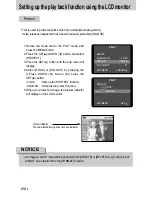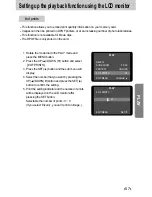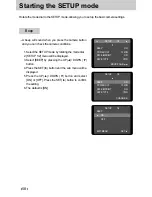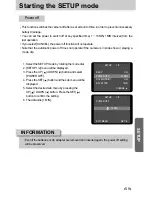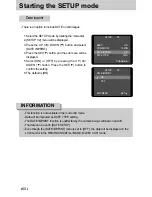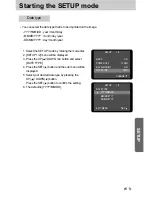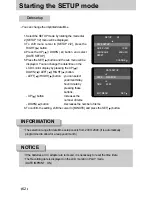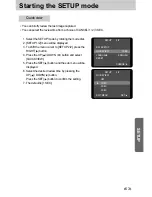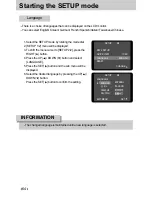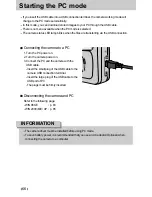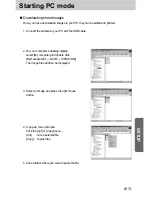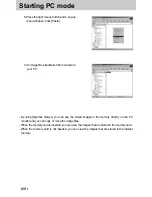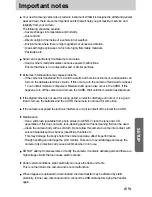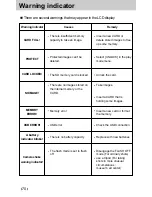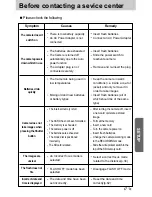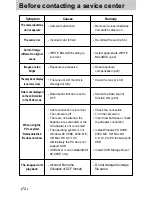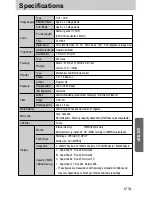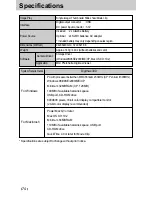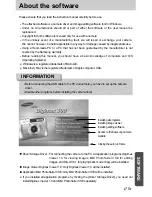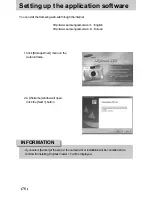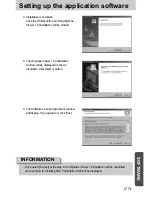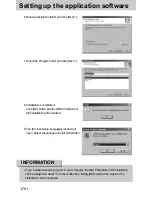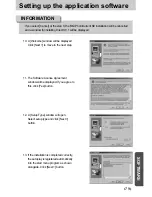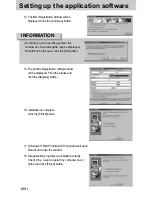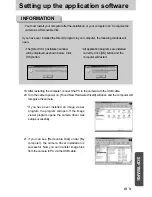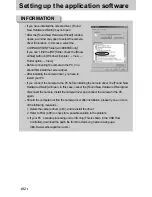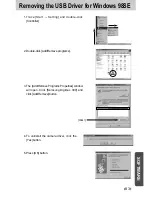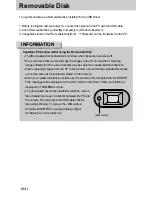
SETUP
69
Important notes
Your new Samsung camera is a precision instrument. Whilst it is designed to withstand general
wear and tear, there are some important points that will help you get maximum service and
reliability from your camera.
The following should be avoided :
Severe changes in temperature and humidity.
Dust and dirt.
Direct sunlight or the inside of a vehicle in hot weather.
Environments where there is high magnetism or excessive vibration.
Areas with high explosives or which are highly flammable materials.
Pesticides, etc.
Sand can be particularly troublesome to cameras.
Sand or other small particulates can cause severe malfunctions.
Ensure that there is no contact with sand or similar particles.
Extremes in temperature may cause problems.
If the camera is transferred from a cold to a warm and humid environment, condensation can
form on the delicate electronic circuitry. If this occurs, turn the camera off and wait for at least
1 hour until all moisture is dispersed. Moisture build up can also occur in the CARD. If this
happens, turn off the camera and remove the CARD. Wait until the moisture has dispersed.
If the digital camera is not used for a long period, an electric discharge can occur. It is a good
idea to remove the batteries and the CARD, the camera is not used for some time.
If the camera is exposed to electronic interference, it will turn itself off to protect the CARD.
Maintenance
Use a soft brush (available from photo stores) to GENTLY clean the lens and LCD
assemblies. If this does not work, lens-cleaning paper with lens cleaning fluid can be used.
Clean the camera body with a soft cloth. Do not allow this camera to come into contact with
solvent materials such as benzol, insecticide, thinners etc.
This may damage the body shell of the camera and also affect its performance.
Rough handling can damage the LCD monitor. Take care to avoid damage and keep the
camera in its protective carry case at all times when not in use.
DO NOT attempt to disassemble or modify the camera. It contains delicate parts and there are
high voltage circuits that can cause electric shocks.
Under certain conditions, static electricity can cause the flash unit to fire.
This is not harmful to the camera and is not a malfunction.
When images are uploaded or downloaded, the data transfer may be affected by static
electricity. In this case, disconnect and re-connect the USB cable before trying the transfer
again.


